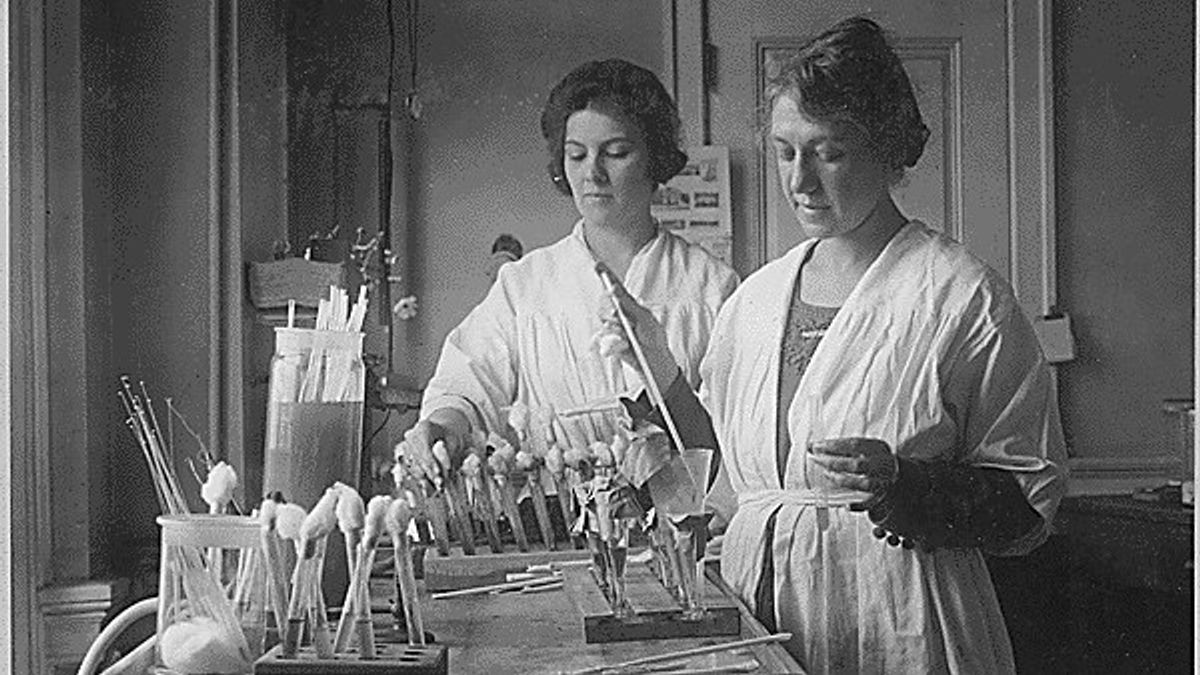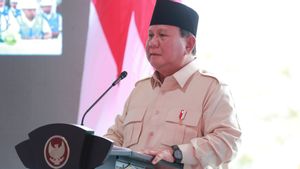JAKARTA - Today the world is shocked by the danger of the corona virus originating from Wuhan, China. Imagine, according to data as of Tuesday, January 28, at 20:48 WIB, 4,474 people were infected. 107 of them died. Worse, until today, a cure and vaccine for the corona virus have not been found.
This condition is similar to the panic in the past countries in treating the variola epidemic or what is commonly known as smallpox. At that time, smallpox was epidemic for thousands of years. Smallpox is a disease that is difficult to cure. Smallpox is even associated with magical matters. Believed to be a plague that comes from a curse and is carried by spirits.
All these assumptions were refuted by the findings of British doctor Edward Jenner. In 1796, he invented the smallpox vaccine. The discovery was based on Jenner's observations of a milkmaid named Sarah Nelms who had cowpox with rashes on her hands and arms.
He, who was taking care of Sarah at that time, did not remain silent. Then, he tested his own theory by taking cowpox pus in Sarah's arm and transplanting it (inoculation) into the body of James Phipps, his gardener's eight-year-old son. After several days, the boy recovered. Two months later Jenner again inoculated James's arms with the same smallpox sample.
From there, Jenner concluded that smallpox can only attack a person once. James proved immune to smallpox which had attacked him. At that time, the rate of vaccine production was accelerated. The interesting thing about the smallpox epidemic in the 14th century is how the Tartar army utilized the smallpox plague as a biological weapon by pelting its enemies with the corpses of smallpox sufferers.
The way the Dutch East Indies deal with smallpox
In 1871, the spread of the smallpox epidemic was widespread. Ternate, Ambon and Bali were the worst affected areas. In Bali, for example, 18,000 people reportedly died from smallpox. This record became an important asset for the handling of smallpox at that time, before the Dutch finally brought the vaccine to all corners of the country.
The existence of vaccines was a breath of fresh air for the Dutch East Indies government at that time. Jean Gelman Taylor, in the book Social Life in Batavia, explains how immunization is a resistance to ancient mystical medicine that was previously practiced by local people in fighting smallpox.
"Immunization against smallpox is a resistance to Indonesian medicine and mestizo that combines healing with magical spiritual things," said Jean Gelman Taylor.
Unfortunately, the spread of smallpox was too fast. The process of distributing vaccines is faced with a pressing issue of time. This condition was recorded by Iksaka Banu in a collection of short stories written in a book entitled Teh dan Pengkhianat.
In a short story entitled Variola, Iksaka Banu cleverly assembled a portrait of the historical event of the spread of the smallpox epidemic as a background for the story. He revealed that the only solution to deal with the smallpox epidemic at that time was to ship vaccines from the Netherlands. Unfortunately, shipping was time-consuming and could not keep up with the rapid spread of the outbreak in Bali.
Finally, vaccines were produced in the Dutch East Indies, starting from Madiun, Kedu, and Kediri. Unfortunately, this step cannot be done quickly. Until another plan was taken, namely by injecting the vaccine into the body of the orphan in Batavia. The children were then taken to Bali. Later, the vaccines that have been injected will be harvested for many people.
The plan didn't go smoothly. The orphanage has fortified itself and rejected the plan. They said: Do you realize that here you are actually trying to interfere in God's business?
For this reason, the Dutch East Indies Government moved towards indigenous children in carrying out this intention. Unfortunately, on the way they encountered new difficulties, namely the limited availability of doctors, most of whom consisted of Dutch people and many of them did not want to go to remote areas.
The establishment of STOVIA
Because of this smallpox vaccination program, in 1851 the government decided to establish the first medical school in the Dutch East Indies, namely Dokter Djawa School which later became School tot Opleiding van Inlandsche Artsen (STOVIA).
A Javanese doctor's school which aims to provide knowledge about smallpox vaccination for native smallpox brokers, the reason it was founded was because at that time the Dutch did not want to directly handle the smallpox epidemic in indigenous areas. Interestingly, all tuition fees, starting from lodging during the two-year study period, are borne by the Dutch East Indies government.
As stated by Firman Lubis in his book Jakarta 1960s: Memories as Student. "The main reason for the opening of the Javanese Medical School is that it takes energy to give vaccinations or become a smallpox vaccine. Smallpox was still a big problem that could take lives at that time. The disease is contagious to the villages while the medical personnel are inadequate. "
In its first year of opening, only 12 students registered. In the following year the students increased by eleven people. Until five years running, the school that became the forerunner of the University of Indonesia (UI) has produced 23 Javanese doctors who served as pox mantri.
This move was also supported by Dutch policy, as reported by Historia.id, that to facilitate the distribution of vaccines to the Dutch East Indies, the government established an association of producers and distributors of smallpox vaccine in 1870.
Every two or three months, the smallpox vaccine is shipped from Amsterdam, Rotterdam, Utrech and The Hague. Since then, smallpox is not as vicious as in the past. The effect is, until today smallpox is no longer a frightening matter because the development of technology and facilities in the health sector has far developed.
The English, Chinese, Japanese, Arabic, and French versions are automatically generated by the AI. So there may still be inaccuracies in translating, please always see Indonesian as our main language. (system supported by DigitalSiber.id)













